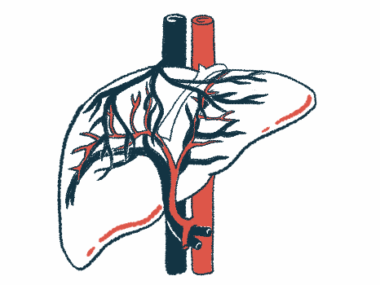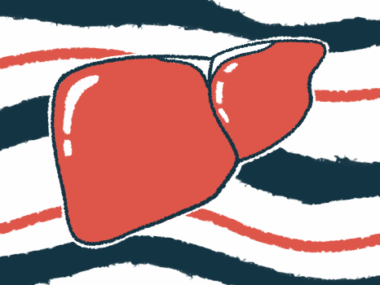Biliary atresia children show delays after living donor liver transplant
Reducing wait time for surgery may minimize risk of cognitive impairment
Written by |

Children with biliary atresia show developmental problems, including language delays, following a living donor liver transplant (LDLT) in infancy and a second surgery to correct complications after the transplant increased the risk of deficits in cognitive and motor development, a study shows.
The corrective surgery was more common in children who had a LDLT at an older age. The findings, along with data that indicate these children display cognitive problems before transplant and that early surgery is linked to better cognitive function, suggest that reducing the wait time to receive an LDLT may help minimize potential cognitive impairment, the researchers wrote in “Cognitive function of children with biliary atresia after primary living donor liver transplantation,” which was published in BMC Pediatrics.
Bile is a digestive fluid produced in the liver that flows through a series of tubes called bile ducts into the intestines. In infants with biliary atresia, the bile ducts are blocked or absent, so excess bile builds up in the liver and causes damage. This can be fatal in early childhood without treatment.
Surgery called a Kasai portoenterostomy is the first-line treatment to restore normal bile flow. Early surgery may improve bile flow to some extent, but most patients will need a liver transplant before adulthood.
As in other pediatric chronic liver diseases, children with biliary atresia are at risk of nutritional deficiencies, which are associated with worse outcomes. Research also suggests these children have a smaller head circumference and language and motor impairments before a liver transplant, “suggesting that the disease itself may cause impairment,” wrote the researchers who previously showed that infants with biliary atresia still lagged behind in cognitive development even after a liver transplant.
Developmental issues after LDLT
Here, the scientists investigated the overall development and cognitive abilities of biliary atresia patients who had a LDLT during infancy as their first therapeutic approach. None received a Kasai portoenterostomy.
In LDLT, a portion of a liver from a healthy living person is removed and placed into a patient.
“To our knowledge, this is the first study to specifically focus on [biliary atresia children undergoing primary LDLT] aiming to clarify their cognitive development in early life,” the researchers wrote of the study, which included 57 children (57.9% boys) with biliary atresia who had an LDLT at a single Chinese center from 2018 to 2022 and who had at least six months of post-transplant data.
The children’s median age at the transplant was 5 months. Due to post-LDLT complications, such as narrowing of the bile ducts or liver blood vessels, 15 children had a second corrective surgery within one to two years of the first one.
Their overall development was assessed at a median age of 25 months, or about two years, using the Griffiths Mental Development Scale (GMDS), which applies to children up to age 8. GMDS domains include motor function, person-social functioning, language, hand-eye coordination, performance, and practical reasoning. From raw GMDS scores, a developmental quotient was calculated, which classified patients into five developmental stages — delayed, borderline, normal, normal-to-high, and advanced.
After a LDLT, the children scored significantly lower in all GMDS domains, except the personal-social domain, relative to normal GMDS scores. When comparing children in whom assessments were done before versus at or later than two years after a transplant, only motor development was significantly worse in those assessed later.
Three children (5.26%) had overall developmental delays and 16 (28.07%) had borderline delays. Language development was the most affected domain and 11 children (19.29%) showed a delay in language acquisition and 17 (29.82%) had borderline delays.
Practical reasoning was assessed in 18 of the 30 children older than age 2 and was found to be significantly impaired.
Adjusted statistical calculations found that a second surgery due to LDLT complications was a significant risk factor of overall development problems. Lower weight at the assessment was specifically associated with motor delay.
Patients having a second surgery were significantly older when they had a liver transplant, had worse liver disease, and stayed longer in the hospital during the procedure, further analyses showed.
“We found that children with [biliary atresia LDLT] had a lower cognitive level than the [normal] population in early life,” the researchers wrote. “Reoperation and lower body weight at assessment were independent risk factors for their postoperative cognitive delay.”
Previous data showed children’s cognitive skills decrease with increasing age at liver transplant, “suggesting that a prolonged waiting time for [liver transplant] in children with chronic liver disease has an irreversible impact on cognitive development,” the researchers wrote.
LDLT has also been linked to cognitive improvements in children with biliary atresia, even though their function may still not reach normal levels for that age.
“Therefore, impaired postoperative cognitive development in children with [biliary atresia] may gradually improve over time, indicating the benefit of neurodevelopmental plasticity in early life,” the researchers wrote. “Shortening the waiting time of [primary LDLT in biliary atresia patients] may reduce the risk of re-operation and thus alleviate cognitive impairment.”







